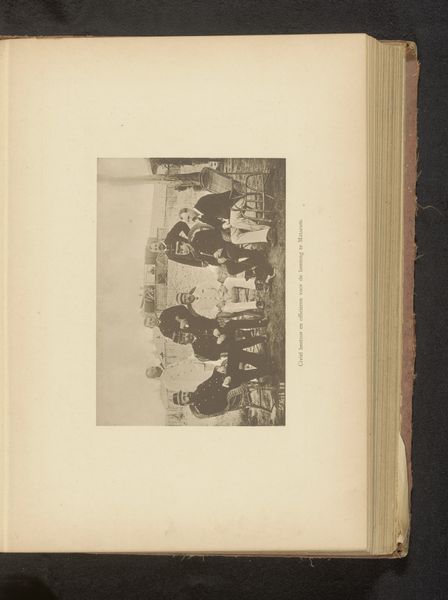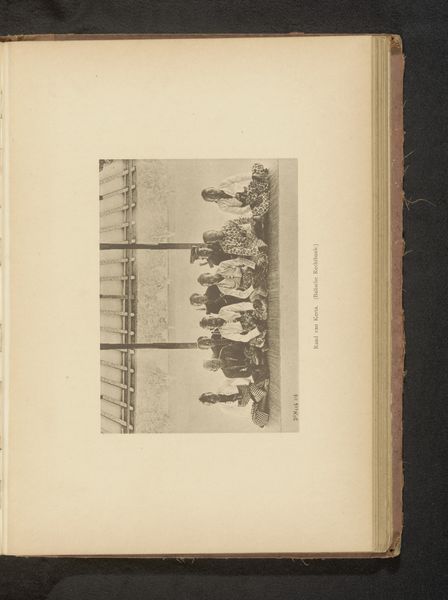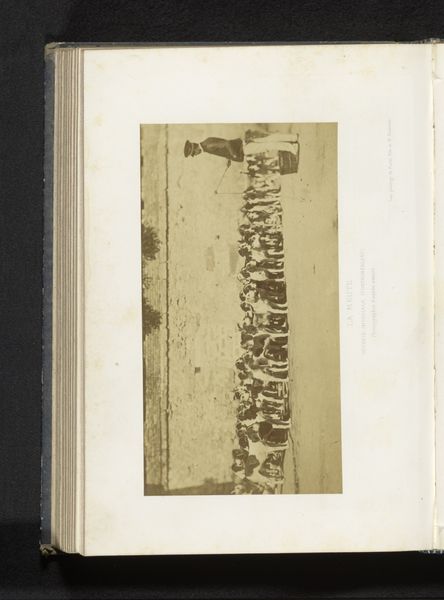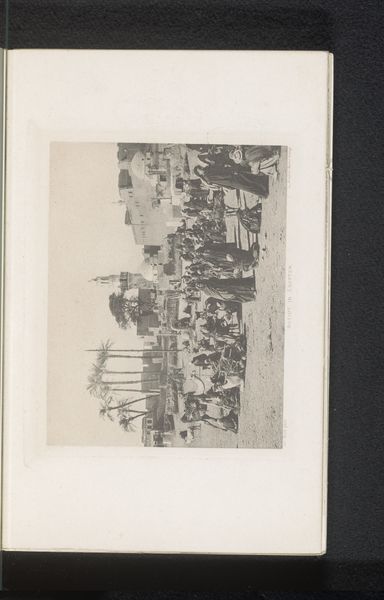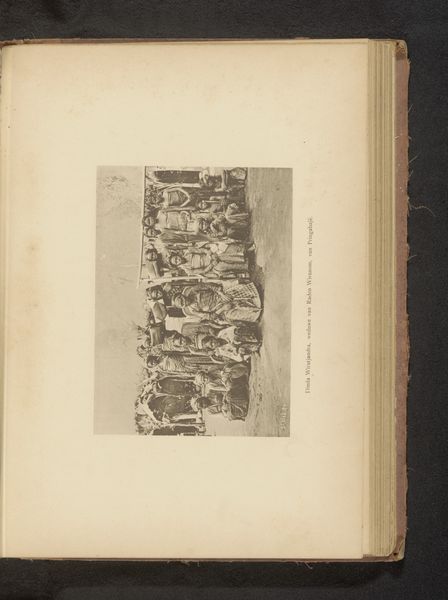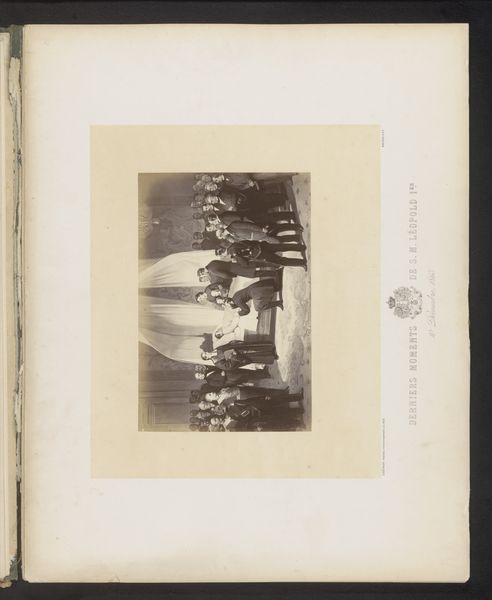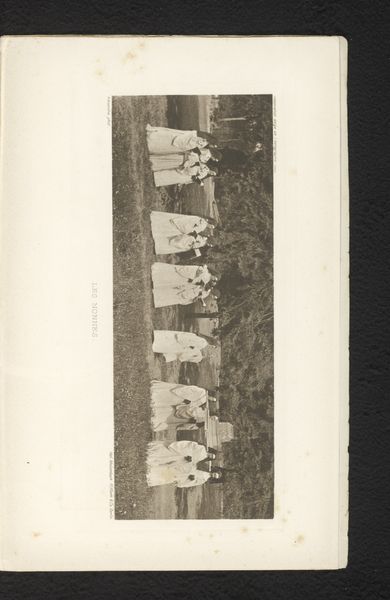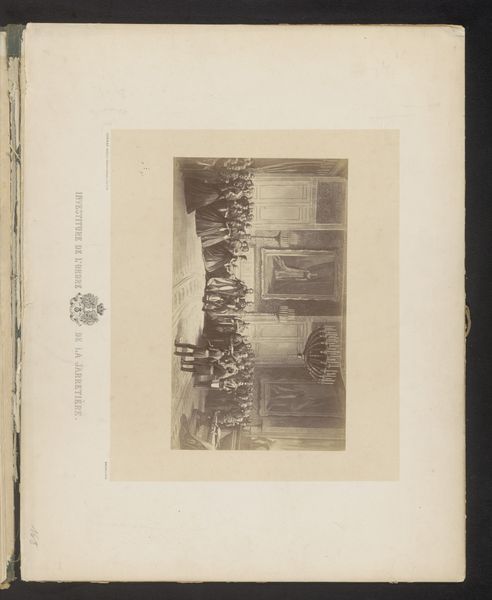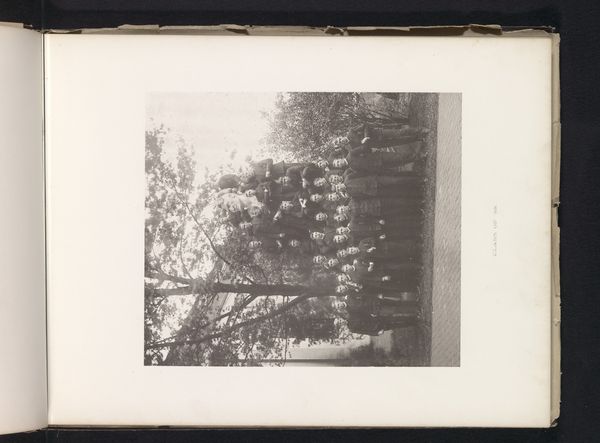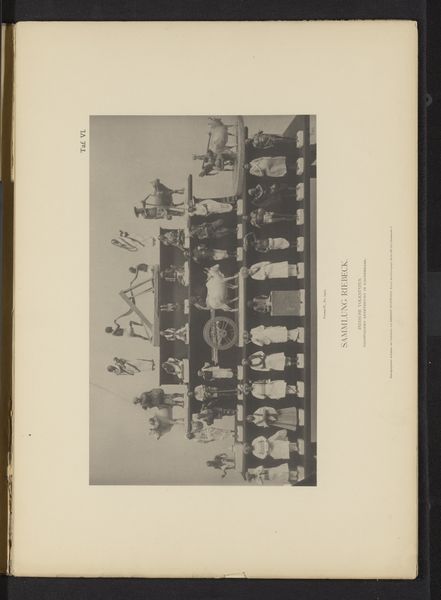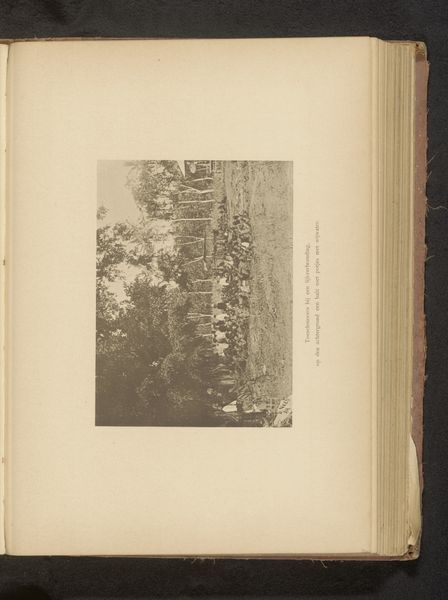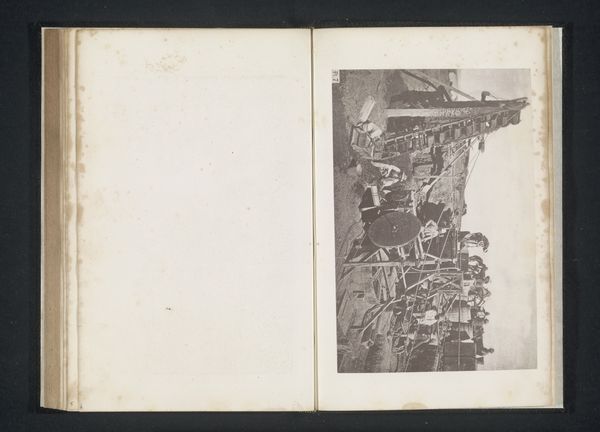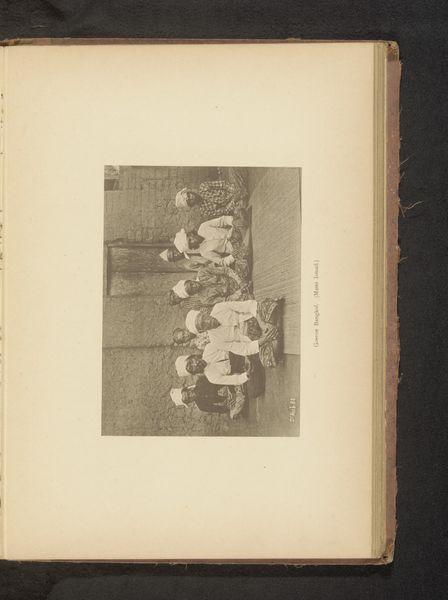
photography, gelatin-silver-print
#
portrait
#
aged paper
#
homemade paper
#
ink paper printed
#
sketch book
#
paper texture
#
photography
#
personal sketchbook
#
journal
#
group-portraits
#
gelatin-silver-print
#
sketchbook drawing
#
sketchbook art
#
realism
#
historical font
Dimensions: height 119 mm, width 165 mm
Copyright: Rijks Museum: Open Domain
Curator: Here we have a fascinating gelatin-silver print titled "Groepsportret van officieren van Lombok," or "Group Portrait of Officers from Lombok," created sometime before 1897 by Christiaan Johan Neeb. Editor: It's so...sepia-toned and stiff! Like a carefully posed school photo, but with more ominous undertones. All those dark uniforms against the faded background—it feels heavy, doesn't it? Curator: It does evoke a certain gravity. This image offers a glimpse into the colonial history of Lombok, now part of Indonesia, and reflects the presence of Dutch military officers there in the late 19th century. Photography played a key role in documenting, and therefore, controlling, these colonial territories. Editor: Absolutely, there's something inherently about ownership at play, especially when photography started to proliferate. I'm wondering who exactly this was made for? Is it propaganda, maybe to reassure back home? It's hard to imagine those people showing off that kind of power back in their homes. Curator: Very possibly, both to project an image of authority to those back in the Netherlands and to solidify their status within the colonial hierarchy on Lombok itself. Consider also how the very act of gathering these men, positioning them, was in itself an assertion of dominance. And indeed how those old journal where that kind of personal memory may stay. Editor: They must have been very self-aware. When someone now creates something personal, you create an alter ego for you; I feel like these officers back then might have felt something along the lines, in different degrees. It feels somehow odd to apply this word, “personal”, in front of them. Curator: The constraints of early photography contribute to that feeling. Poses had to be held, expressions controlled. Yet within that control, perhaps we can glimpse the individual ambitions and anxieties of these men caught in a specific moment in history. Editor: I suppose you're right. Perhaps each face holds a story we'll never fully know. Curator: Well, hopefully by giving it voice in conversations like this, it gives those photos and people another opportunity to come to life. Editor: And what a thought that is. Thank you.
Comments
No comments
Be the first to comment and join the conversation on the ultimate creative platform.
